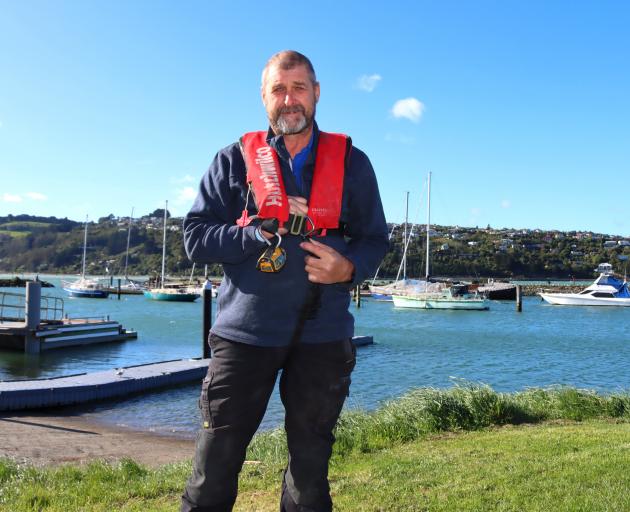Top Stories
Otago Harbourmaster Urges Safety Checks for Lifejackets Amid Storms

Recent severe weather conditions in Otago have prompted the harbourmaster team to remind the public about the importance of water safety. On a stormy afternoon last Thursday, Port Otago recorded winds reaching an alarming 93 knots (170 km/h), creating the most challenging harbour conditions seen in decades, according to Deputy Harbourmaster Pete Dryden.
Dryden expressed his astonishment at the ferocity of the weather, stating, “I’ve been here all my life, and I’ve never seen a harbour like it ever.” Visibility from the shore near the Otago Yacht Club was severely limited, with houses across the harbour obscured by heavy spray. “You wouldn’t have seen those, just with the spray getting ripped off the water. It was horrendous,” he added.
Preparation and Safety Recommendations
In light of these conditions, Dryden emphasized the necessity of being prepared before heading out on the water. He advised potential boaters and fishers to heed weather warnings: “Anyone, hopefully in their right mind, would have looked at the weather and gone, ‘oh, there’s a wind warning out, maybe I won’t go fishing today.’”
One particular concern is the safety equipment used by boaters. Older-style lifejackets, which are filled with kapok, are increasingly viewed as inadequate because the material absorbs water and can weigh individuals down in an emergency. This highlights the critical need for modern alternatives.
Old4New Initiative Offers Lifejacket Upgrades
To address this issue, Coastguard Tautiaki Moana is set to run its Old4New campaign again in December 2023. This initiative allows individuals to upgrade their lifejackets, which come in a variety of sizes to accommodate everyone from infants to adults. Dryden likened selecting a lifejacket to buying clothing, stating, “It is like going and buying a pair of trousers. You don’t go and get a set of extra large trousers and put them on and expect to get down the street without them falling off.”
Proper usage of lifejackets is equally important. Individuals are encouraged to wear them correctly, ensuring that crotch straps are used to prevent the jackets from riding up in the water. For those using inflatable models, it is crucial to check the gas canister, ensuring it is green to indicate readiness. “We recommend getting them looked at or checking them annually,” Dryden advised.
Additionally, he suggested that boaters manually inflate their lifejackets and leave them for 24 hours to check for any deflation. “We want everyone to have fun, but we want them to do it safely and we want them to come home at night,” he concluded.
For more information about the Old4New lifejacket replacement initiative, interested individuals can visit coastguard.nz.
-

 World3 months ago
World3 months agoTest Your Knowledge: Take the Herald’s Afternoon Quiz Today
-

 Sports3 months ago
Sports3 months agoPM Faces Backlash from Fans During Netball Trophy Ceremony
-

 Lifestyle3 months ago
Lifestyle3 months agoDunedin Designers Win Top Award at Hokonui Fashion Event
-

 Sports3 months ago
Sports3 months agoLiam Lawson Launches New Era for Racing Bulls with Strong Start
-

 Lifestyle3 months ago
Lifestyle3 months agoDisney Fan Reveals Dress Code Tips for Park Visitors
-

 Health3 months ago
Health3 months agoWalking Faster Offers Major Health Benefits for Older Adults
-

 World3 months ago
World3 months agoCoalition Forms to Preserve Māori Wards in Hawke’s Bay
-

 Politics3 months ago
Politics3 months agoScots Rally with Humor and Music to Protest Trump’s Visit
-

 Top Stories3 months ago
Top Stories3 months agoUK and India Finalize Trade Deal to Boost Economic Ties
-

 Entertainment3 months ago
Entertainment3 months agoExperience the Excitement of ‘Chief of War’ in Oʻahu
-

 World3 months ago
World3 months agoHuntly Begins Water Pipe Flushing to Resolve Brown Water Issue
-

 Science3 months ago
Science3 months agoNew Interactive Map Reveals Wairarapa Valley’s Geological Secrets









